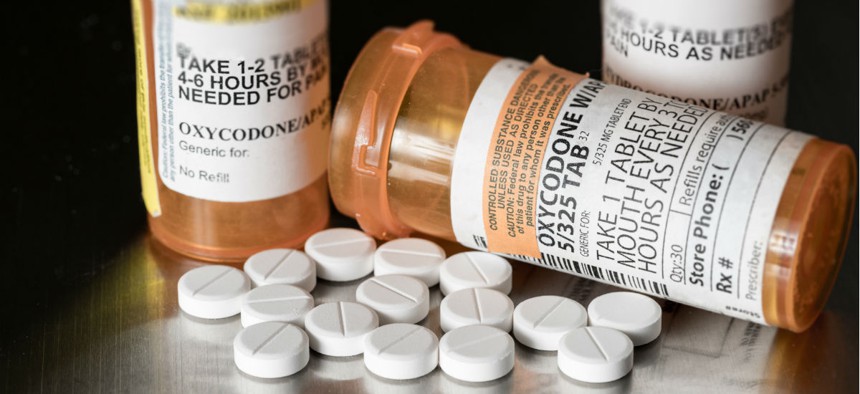
Fighting the Opioid Epidemic with Evidence and Innovation
How Congress and the Health and Human Services Department can reduce opioid-related deaths.
What will it take to tackle our nation’s opioid epidemic, with more than 140 Americans dying every day from overdoses of prescription opioids and heroin? Money is important—federal and state governments are spending billions through Medicaid, the Substance Abuse Block Grants, and the recent 21st Century Cures Act. But funding is only part of the challenge. We also need more effective treatments and better ways to deliver services to those in need. In other words, we need a learning and innovation strategy to accompany and hone a treatment strategy.
For example, the most promising opioid use disorder treatment is Medication-Assisted Treatment that combines medication with behavioral therapies. But MAT is not widely implemented, and the quality of evidence supporting it varies by the treatment type, context, and population served. We urgently need a better understanding of how best to use MAT.
Moreover, because the mix of opioids that are abused has changed in unexpected and deadly ways, any single (or previously established) treatment approach is less likely to be effective. That underscores the importance of developing new approaches to treatment.
And finally, many people with substance use disorders never receive treatment at all. That highlights the need to not only increase treatment availability, but to develop better ways to engage people and retain them in treatment.
To spur more evidence and innovation in addressing the opioid crisis, the Health and Human Services Department needs to play a central role. In particular, it should immediately launch an innovation fund for addressing opioid addiction. The Substance Abuse and Mental Health Services Administration is the agency best suited to lead such an effort, with support from research experts across HHS. SAMHSA has for years supported the implementation of new strategies aimed at addressing mental health and substance use disorders in the U.S.
The fund should use a so-called “tiered-evidence” design that allows for scaling up programs with strong evidence of effectiveness while simultaneously supporting field-generated innovations that can lead to even more effective interventions. The approach is similar to that of a venture capital fund, where investors (SAMHSA, in this case) place bigger bets on approaches with more evidence of success and use smaller bets to encourage new and innovative approaches. The tiered-evidence approach has bipartisan support, including from Speaker of the House Paul Ryan and House Republicans who called on Congress to require social programs to use a tiered-evidence model.
An innovation fund at SAMHSA—call it the Opioid Use Disorder Innovation and Research (OPIR) program—could be launched in one of two ways. First, Congress could develop legislation that directs SAMHSA to award competitive grants using a tiered framework. Alternatively, SAMHSA could use its existing authority to modify its solicitations for substance use disorder grants to incorporate tiered evidence criteria. Either way, Congress and HHS should work together to ensure adequate resources are provided to implement the program effectively.
How exactly would OPIR work? HHS would make grants to states and other eligible entities to test or expand entrepreneurial and field-initiated innovations to address opioid use disorders. The grants could be implemented using the following tiered approach:
- Early-phase grants (e.g., $50,000 to $300,000) to fund the development and feasibility testing of interventions with a record of promising prior evaluation results, for the purpose of determining whether the interventions can be successfully implemented in real-world settings, such as hospitals, jails, and community health clinics.
- Mid-phase grants (e.g., $500,000 to $3 million) to fund the implementation and rigorous evaluation of interventions that have been successfully implemented in an early phase, in order to measure their impact on important outcomes, such as opioid use, mortality and criminal arrests.
- Expansion grants (e.g., $3 million to $7 million) to fund the implementation and rigorous replication evaluation of interventions with strong evidence of sizable, important impacts, in order to deliver the interventions on a larger scale and determine whether their success can be reproduced and sustained over time.
Likely the biggest barrier to the creation of an OPIR program is an understandable belief, given the scope of the crisis, that every dollar of opioid-related funding should be spent immediately on existing treatments, rather than carving out a portion of those dollars to develop and evaluate better treatment approaches.
It is important to recall, however, that the number of opioid-related deaths has been growing at 9 percent per year for almost 40 years: It is a crisis long in the making and one that will take time to remedy. That is especially true given the changing nature of the epidemic. Underinvesting in a learning and innovation strategy now would cost lives in the future.
Congress took an important step last year by providing significant new funding to address the opioid epidemic. Now Congress and HHS should take another crucial step to ensure that those additional funds—and future spending at the federal, state and local levels—go to the most effective strategies possible. Launching an innovation fund within SAMHSA to test and evaluate new approaches would be a useful step toward that goal.
Andrew Feldman is a director of results-driven government at the Laura and John Arnold Foundation.
Richard Frank is a professor of health economics at Harvard Medical School. He recently served as the assistant secretary for planning and evaluation at the Health and Human Services Department.
Christopher Spera is the division vice president for health and environment at Abt Associates and a professor of public policy and management at Carnegie Mellon University.






